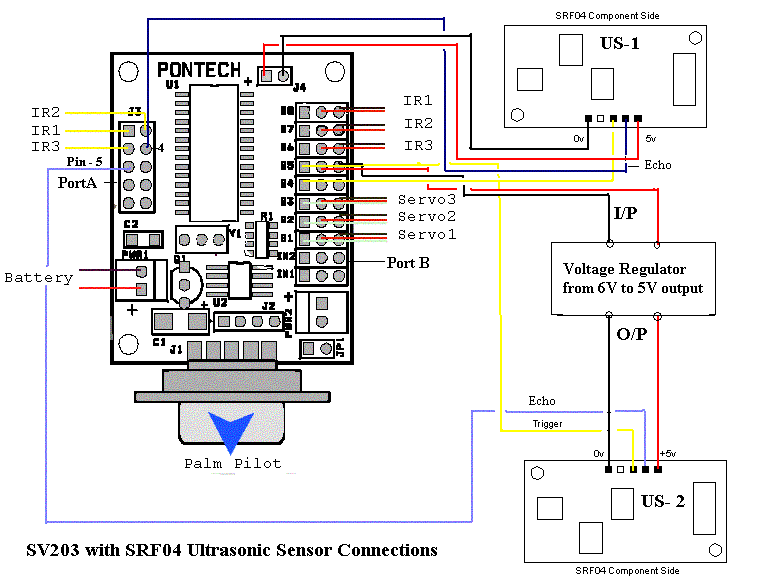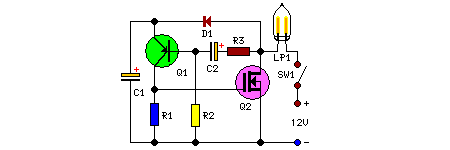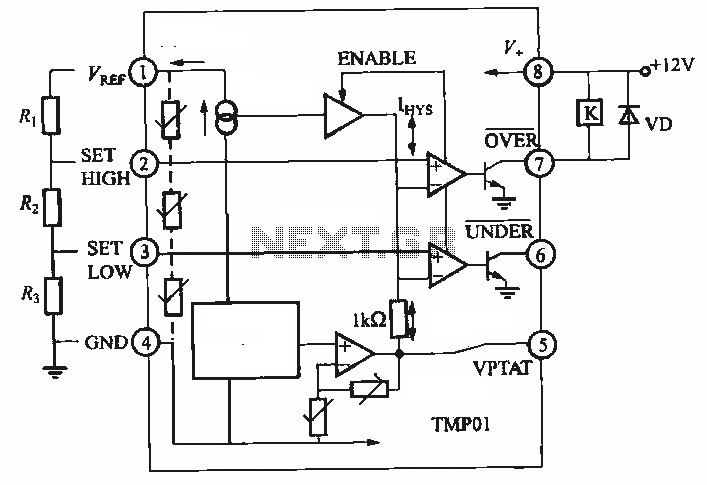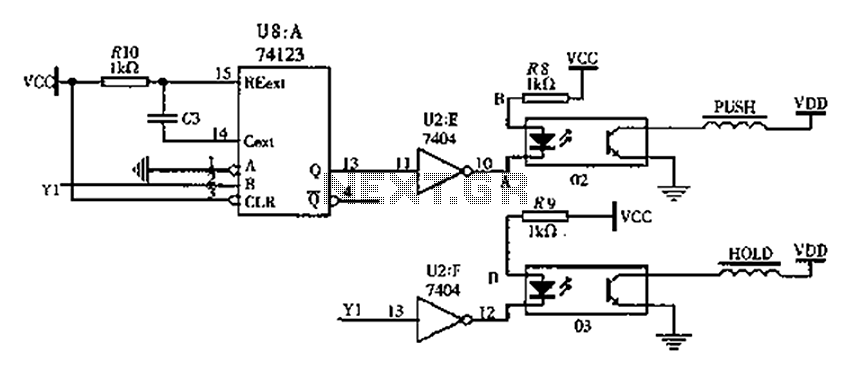
High Power Portable TV and FM Jammer circuit
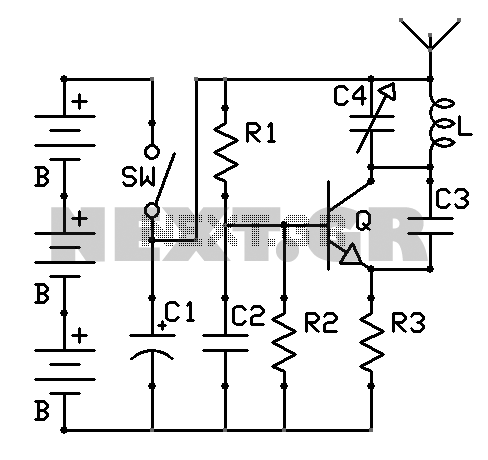
There are neighbors who may disturb you with loud televisions or radios. A solution is available. This jammer emits jamming waves that affect the TVs and radios in the neighborhood, so caution is advised. This device is an enhanced version of the traditional "TV and FM jammer schematic," featuring significantly higher power. Many users requested a stronger and wider effect while maintaining portability. The schematic shows that only the components were modified while keeping the basic circuit design intact. It is important to note that this version requires a heat sink and antenna to ensure the transistor operates effectively.
The power source consists of three 9-volt batteries connected in series, providing a total input of 27 volts, which results in a powerful output of 2.5 watts. A simple wire antenna measuring between 70 cm and 2 meters is necessary for operation. The transistor used in this circuit is the 2N3553, a radio frequency power silicon NPN transistor housed in a TO39 package, designed for use in amplifiers and oscillator applications in military and industrial settings. Typically utilized as an output driver or in pre-driver stages within VHF equipment, this application prioritizes power over modulation, justifying its use as both the initial and final output driver.
The transistor operates at a frequency of 175 MHz and a voltage of 28V, providing an output power of 2.5 watts, a minimum gain of 10 dB, and an efficiency of 50%. The components required for this circuit include: R1=10k, R2=2.2k, R3=100, C1=47uF/50V, C2=2.2nF, C3=10pF, SW=switch, and B=9V battery. The coil L should consist of approximately five closely wound turns, starting with a distance of 1.5 mm between turns, utilizing enameled copper wire with a 1 cm internal diameter and leads measuring 2x20 mm. The variable capacitor C4 should be an air trimmer capacitor rated between 4 to 30 pF or the closest available value.
Batteries should be connected in series, and a suitable heat sink for the TO39 case must be installed. Finally, all components should be housed within a compact plastic enclosure for optimal performance.There are still neighbors that keep annoying you by having loud the TV or the radio? Well I have you the solution. In fact all neighborhood will face your jamming waves at their TVs and radios, so be careful. This Jammer is the improved version of the old "TV and FM jammer schematic" with the difference of much higher power. Many of you where asking for a stronger and wider effect but to be as portable as can be. Looking at the schematic you can see that, only the parts are changing keeping the basic circuit intact.
Have in mind that this version needs heat sink and antenna to keep the transistor alive.
The power source consists of three 9-volt batteries connected in series, providing a total input of 27 volts, which results in a powerful output of 2.5 watts. A simple wire antenna measuring between 70 cm and 2 meters is necessary for operation. The transistor used in this circuit is the 2N3553, a radio frequency power silicon NPN transistor housed in a TO39 package, designed for use in amplifiers and oscillator applications in military and industrial settings. Typically utilized as an output driver or in pre-driver stages within VHF equipment, this application prioritizes power over modulation, justifying its use as both the initial and final output driver.
The transistor operates at a frequency of 175 MHz and a voltage of 28V, providing an output power of 2.5 watts, a minimum gain of 10 dB, and an efficiency of 50%. The components required for this circuit include: R1=10k, R2=2.2k, R3=100, C1=47uF/50V, C2=2.2nF, C3=10pF, SW=switch, and B=9V battery. The coil L should consist of approximately five closely wound turns, starting with a distance of 1.5 mm between turns, utilizing enameled copper wire with a 1 cm internal diameter and leads measuring 2x20 mm. The variable capacitor C4 should be an air trimmer capacitor rated between 4 to 30 pF or the closest available value.
Batteries should be connected in series, and a suitable heat sink for the TO39 case must be installed. Finally, all components should be housed within a compact plastic enclosure for optimal performance.There are still neighbors that keep annoying you by having loud the TV or the radio? Well I have you the solution. In fact all neighborhood will face your jamming waves at their TVs and radios, so be careful. This Jammer is the improved version of the old "TV and FM jammer schematic" with the difference of much higher power. Many of you where asking for a stronger and wider effect but to be as portable as can be. Looking at the schematic you can see that, only the parts are changing keeping the basic circuit intact.
Have in mind that this version needs heat sink and antenna to keep the transistor alive.
The power source comes from three 9 volt batteries in series, so we use 27 volts at input, and we get a power full 2,5 Watts at output.
You are going to need 70cm to 2 meter simple wire antenna.
As for the transistor Q its the 2N3553. Its a RF Power Silicon NPN Transistor in a TO39 type package designed to be used in amplifiers and oscillator applications in military and industrial equipment.
Usually found as an output driver, or in predriver stages in VHF equipment, but because here we don't care about the modulation of the signal but just the power, that's why we use it as a first and final output driver.
The transistor is specified at 175MHz and 28V to give: Output Power: 2.5W, Minimum Gain: 10dB and Efficiency: 50%.
The parts are: R1=10k, R2=2,2K, R3=100 C1=47uF/50V, C2=2.2nF, C3=10pF, SW=switch, B=Battery 9V.
The coil L should be closely wound 5 turns (start tunning with the closely wound distance of turns and then play with it and the C4 capacitor, to find the desired frequency )of enameled copper wire 1.5mm and internal coil diameter of 1cm (leads 2x20mm).
The variable capacitor C4 should be air trimmer capacitor rating 4 to 30 pf or the closest to this value.
Connect the batteries in series place the best heat sink for TO39 case you can get and pack it all in a small plastic box. Enjoy ;)
